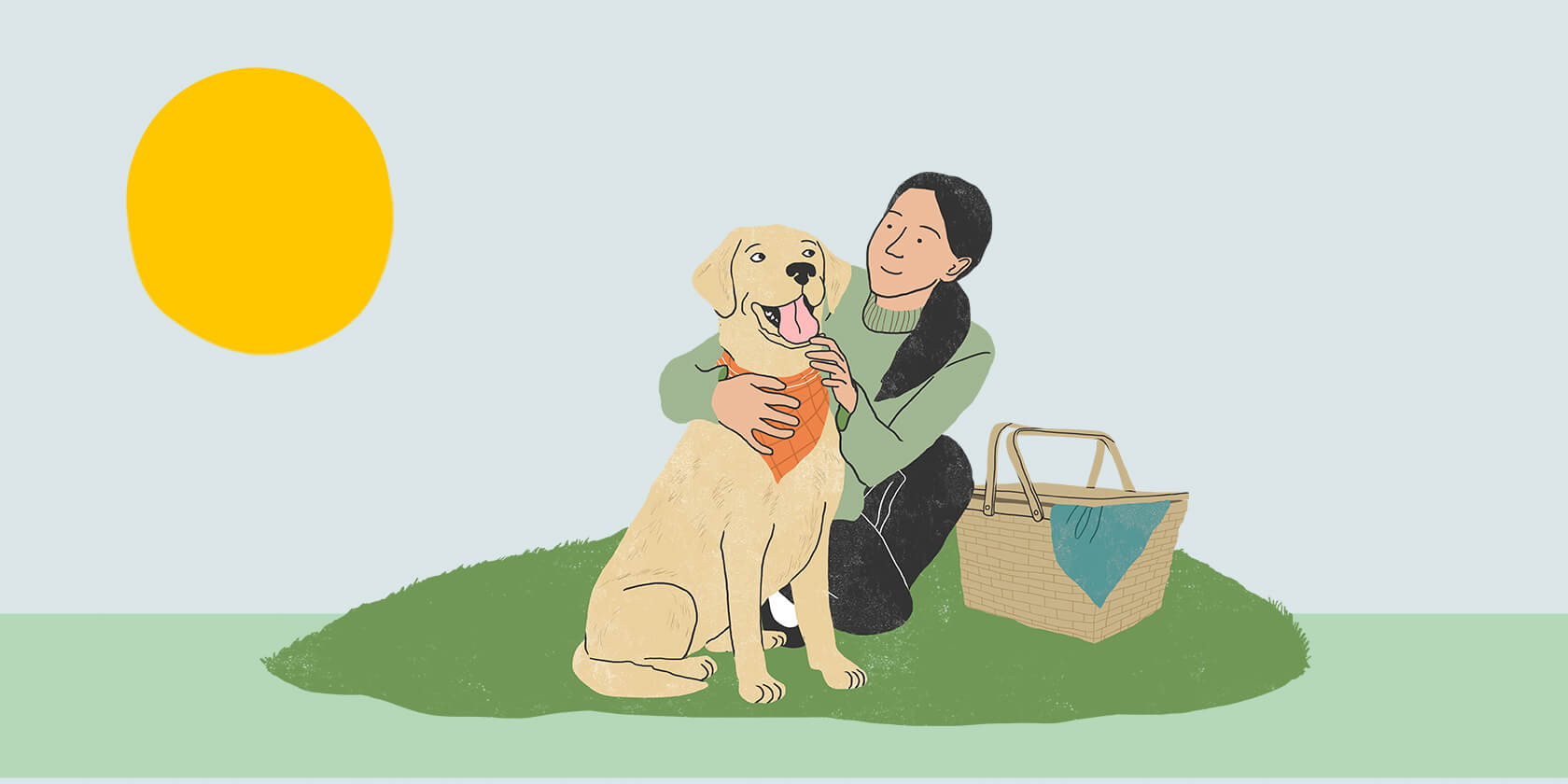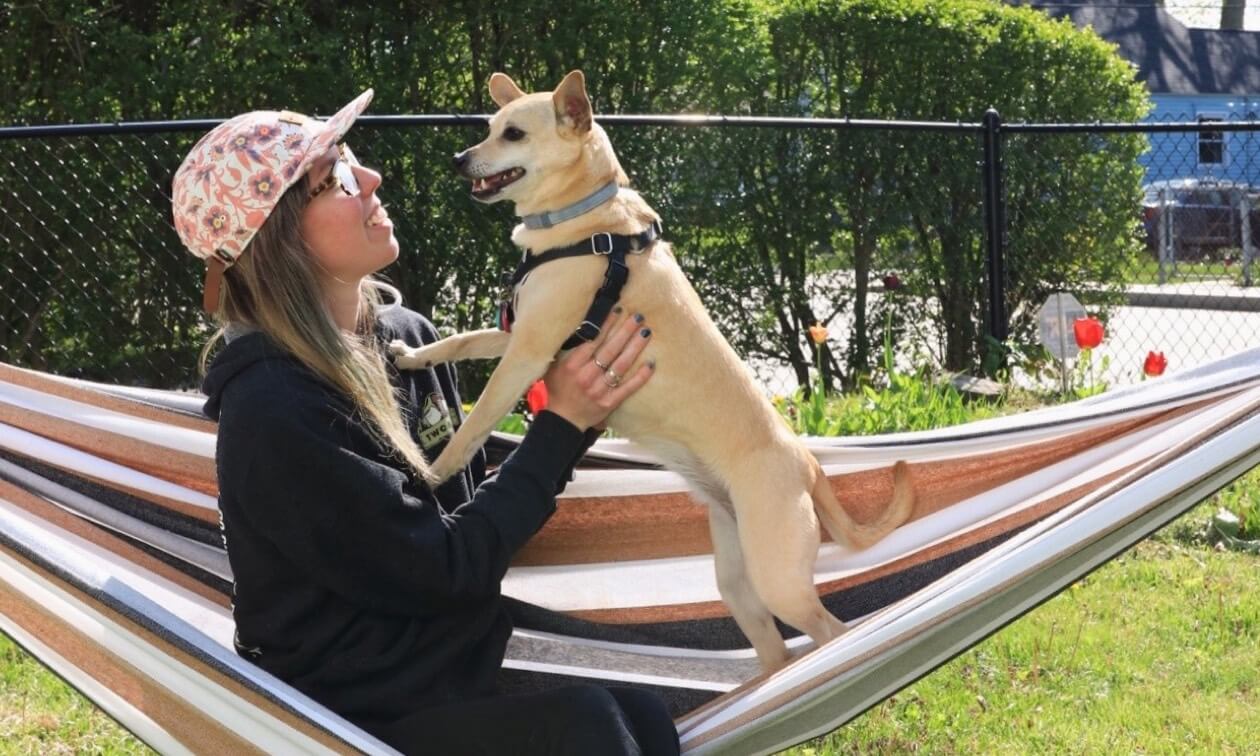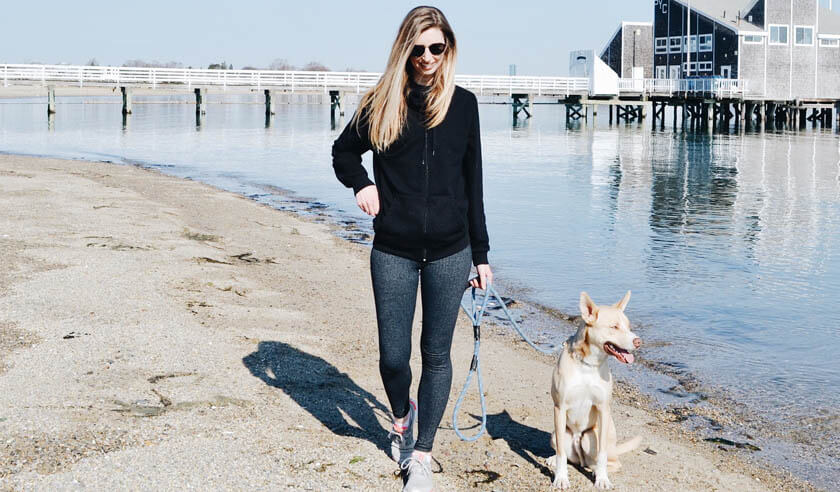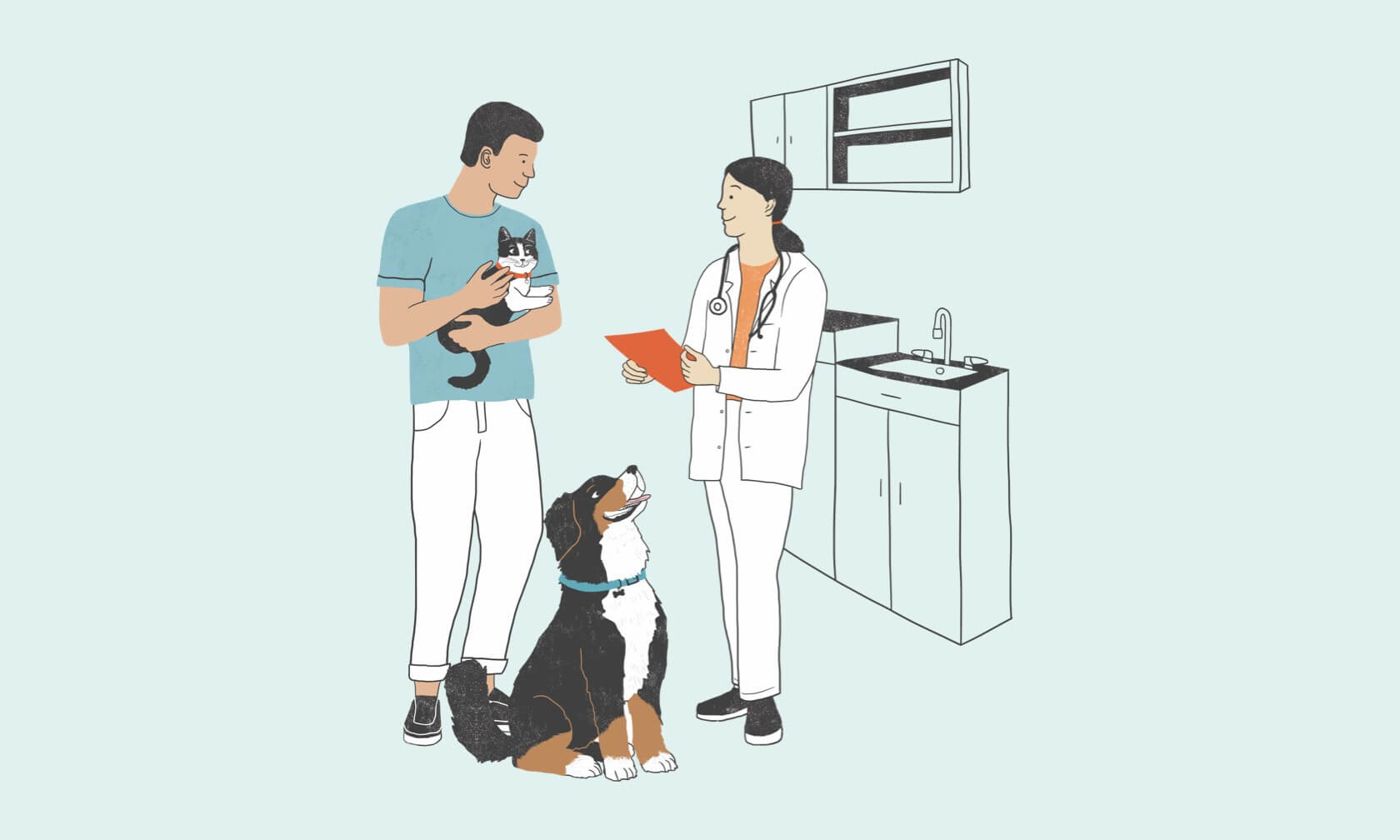When it comes to sunbathing, dogs are no different than people. Knowing how to prevent your dog from sunburn helps keep them from unnecessary discomfort and reduce the skin health risks associated with sun exposure. Additionally, understanding the best ways to treat it when it happens will shorten their recovery and allow you both to get back outdoors quickly and safely.

Is It Possible for Your Dog to Get a Sunburn?
While it seems impossible for dogs to get sunburn when they’re covered in fur, it happens. Fur can provide some protection, but it isn’t impenetrable armor. Every dog has vulnerable areas on their body where sunburn can occur, like their:
- Ear tips/margins
- Nose
- Eyelids
- Lips/Margins of the mouth
- Tip of the tail
- Belly
Certain features make some dogs more prone to sunburn, such as:
- Dogs with white, light, or ginger-colored fur (because the underlying skin is typically fair)
- Naturally thin-coated breeds like Pitbulls, Boxers, Dalmatians, and Greyhounds
- Hairless breeds such as the Chinese Crested
- Those with bald patches
Signs Your Dog Has Sunburn
Knowing the signs of sunburn in dogs and acting fast is critical. If you’re seeing pink sunburned skin on your dog, there’s already more damage than what you’d expect from a human sunburn. If you notice any of these signs, immediately get your dog out of the sun:
- Pink or red skin
- Skin is tender to the touch
- Itchiness
- Flaking
- Crusting
- Dry or cracked skin
- Curling of ear edges
- Blisters
- Hair loss
- Severe cases may cause mild fever, skin ulcers, and skin infections.
How to Protect Your Dog from Sunburn
Besides sunburn being painful for dogs, it can lead to skin cancer. So, prevention is key!
There are several ways you can protect your dog from sunburn.
- Avoid the Sun
Walk in the early morning and late evening when the sun isn’t as strong. Keep your dog from lying in direct sunlight and provide adequate shade anytime they’re outdoors. - Apply Pet-Specific Sunscreen
Use a waterproof option (made for pets) with an SPF of at least 30 that protects against UVA and UVB rays. 15 minutes before going outside, apply a double layer to all vulnerable areas like the nose, belly, ears, and tail, and anywhere their coat is thin. Remember to reapply as needed, especially after swimming. Avoid using human sunscreen products or any that contain zinc oxide, PABA, or salicylates. Do not use spray sunscreens because your dog may inhale them, or it may get in their eyes. And do not let your dog lick off the sunscreen. - Use UV Block Clothing
Hats, shirts, or bodysuits designed for dogs can help block UV rays and protect areas where sunscreen can’t be applied, like the mouth and eyes. Use doggie goggles with UV blocking lenses. Remember, clothes may not protect all vulnerable areas, so sunscreen is still needed.
How to Treat Your Dog’s Sunburn
When your dog’s sunburn is very mild, with only slightly pink skin and no pain, you can treat it at home with cold compresses, oatmeal baths, and pet-approved aloe vera gel. However, if any new symptoms develop, you should contact your veterinarian.
For all other cases of sunburn, it’s best to have your dog evaluated by a veterinarian. Remember, the tissue damage is often worse than it initially appears. Treatment will be dependent on the severity of the burn and what symptoms are present. One or more of the following treatments may be recommended:
- Antibiotics
- Pain medications
- Cold laser therapy
- Wound flushing
- Topical ointments or creams
Following a moderate to severe sunburn, you must keep your dog out of the sun until the skin is completely healed. After healing, it’s critical that you vigilantly protect their skin from the sun to prevent further damage and skin cancer.
Won’t Your Dog Get Out of The Sun on Their Own?
Yes and no. When the sun gets too intense, dogs will naturally seek shade. But it may not be soon enough. And in addition to risking sunburn when they spend too much time in the sun, they’re also at risk of heatstroke. If this happens, they may not be physically able to move to shade on their own. That’s why supervision, water access, and lots of shaded location options are essential for your dog’s outdoor safety.
ZPC-01819





